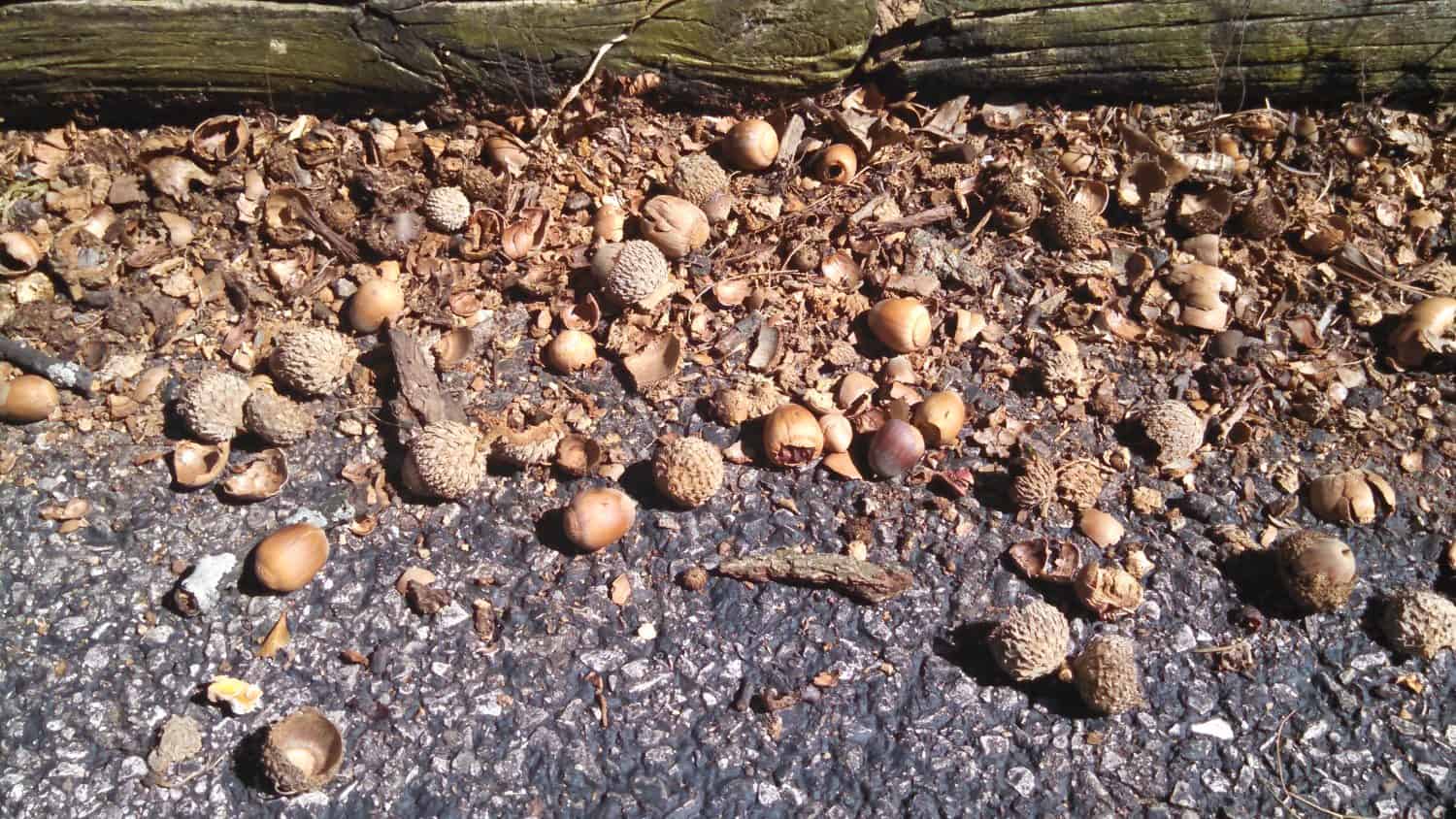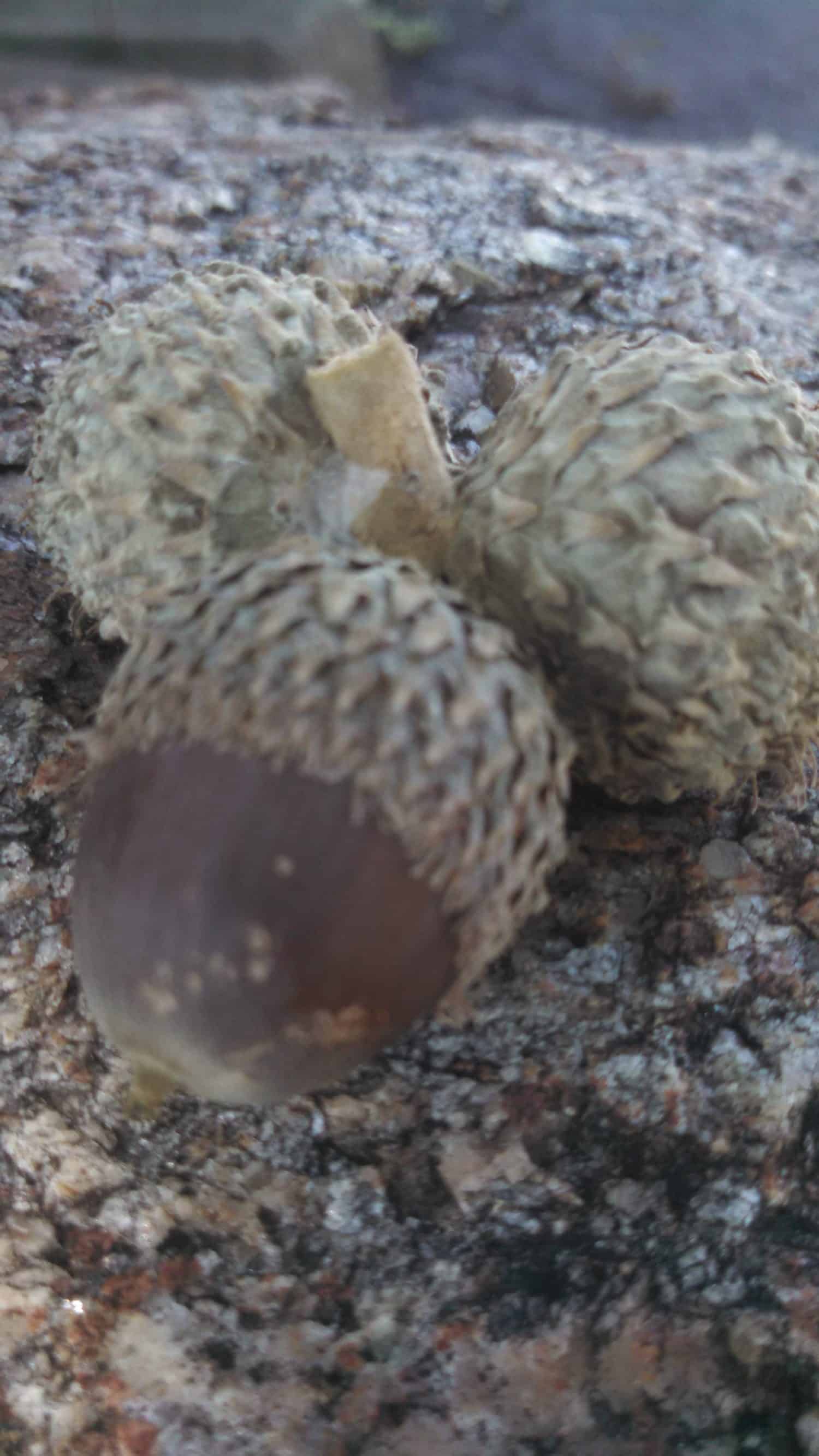Without so much as a warning or civic alert, the bombs began to fall. Sparsely, at first, quickly ramping up to a barrage. They fell with great velocity, unbiased yet fierce. The driveway, lawn, roof, streets and cars – none of them immune to the blitzkrieg. We had been overrun quickly, swiftly, and deftly. The enemy was well armed and adept. Our perceived allies began to work in tandem with the enemy, and the bombing hastened. The constant thuds, pings, bangs, and bumps rattled our nerves and psyches. Shrapnel covered the landscape. The war had begun.
Acorns. The mighty Oaks were being pillaged by the neighborhood squirrels and birds who flung the nuts (technically seeds) on to the ground below with great ferocity and purpose. We became unintended victims of their foraging, yet I swear, at times, they were aiming squarely for my head. Acorns provide an important food source for many animals that, in some cases, sustain them throughout the winter months, and it appears to be a banner year. But is it?
Not all Oaks produce acorns. In fact, the Oak must be at least 20 years old before it bears the infamous nut and can keep producing well into their 80’s, but not all years are good years. Some Oaks can produce upwards of thousands of acorns in a single season while others seem hard pressed to produce a handful. Like many things in nature, acorn production is cyclical. It’s either boom or bust, and banner years seldomly repeat their performance back to back. The reason is not fully understood, but some scientists believe it’s weather related while others believe internal rhythms and evolutionary adaptation are at play. This seems to make sense as the two Oaks on the perimeter of our property seem to be in a boom cycle while the largest Oak in the center of our yard seems barren.
So, what to do with all the acorns or remnants thereof? Well, you could eat them, but the preparation is somewhat involved as the tannins in acorns make them almost impossible to stomach. If they’re anything like roasted chestnuts, I’ll pass. Good grief. You could also craft with them or perhaps just leave them for a while to insure the local wildlife has adequately stockpiled for the coming winter. Of course, eventually, they’ll need to be raked and bagged, and there’s a 1 in 10,000 chance that one of those acorns might just grow into a mighty Oak.
Enjoy some fun facts. You might learn something, or not.
- Acorns are loaded with protein, carbohydrates, and fats.
- There are over 600 different species of Oak and approximately 90 are native to the U.S.
- A single Oak produces both male and female flowers.
- Each acorn contains one seed and takes 6-18 months to mature, depending on the species.
- Oak was commonly used on Viking Longships.
- Barrels in which spirits are aged are made from American and European Oak.
- Oak leaves and acorns are poisonous to cattle, goats, horses, and sheep.
- In 2004, the U.S. designated the Oak as the National Tree.
- The Seven Sisters Oak is a popular Louisiana landmark and thought to be over 1,500 years old.
“Faith sees a beautiful blossom in a bulb, a lovely garden in a seed, and a giant oak in an acorn.”
~ William Arthur Ward
Best wishes,
Kim Sweeney



One comment on “Acorn Wars”